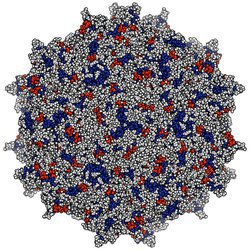Over forty faculty from four divisions (BBE, CCE, GPS, EAS) work together to understand microbial systems at various spatial and temporal scales: from the molecular to the global, from the past to the present, and towards future engineering applications. We utilize microorganisms to explore basic biology and biochemistry problems, understand the physical principles governing biological systems, investigate mechanisms that underpin the robustness, stability, and design of complex networks, and explore the interactions among microbes in communities and between microbes and their environment. We also investigate interactions between microbes (under both pathogenic and non-pathogenic conditions) and the immune system, and we seek to understand how the immune system develops, functions, and can be manipulated to maintain human health. The Center for Environmental Microbial Interactions (CEMI) provides support for research in this area and serves a home for the microbiology community at Caltech.
Biosphere Science and Engineering

Up to now, planet Earth's environment (including climate, flora and fauna) has evolved mostly governed by `natural laws' (physics, random mutation, natural selection, competition of species, symbiosis etc.). Increasingly, Earth's environment is affected by human activity. One of the greatest challenges facing scientists and engineers today is how to contribute to mitigating and adapting to climate change. At this point humanity needs knowledge to make informed choices, and technology to have better options. Caltech's interdisciplinary strength allows biologists and bioengineers interested in environmental sustainability to collaborate with like-minded scientists across the institute to work towards innovative solutions.
Additional resources for research in this area are available through the Ecology and Biosphere Engineering (EBE) initiative within the Resnick Sustainability Institute and through our partnership with the Carnegie Institution for Science (Division of Biosphere Science and Engeineering).
Host-Microbe Interactions

Microbes inhabit almost every terrestrial, aquatic, and biological ecosystem on the planet, and are often instrumental in shaping their milieu. The relationships that microbes have with their environments span from symbiotic (where they confer benefits) to pathogenic (where they cause disease). Further, microorganisms live in a dynamic relationship with plants and animals, where they influence and are affected by the metabolic, immune, and nervous systems. The multidisciplinary research programs at Caltech seek to uncover and understand complex interactions between microbes and their hosts, employing computational, theoretical, and experimental approaches to investigate model systems spanning from cells, to laboratory animals, to humans. Image Credit: Mark Ladinsky
Microbial Communities and Ecology

In Earth's near surface environment, there are sparingly few niches that aren't inhabited by microorganisms, from soils to sediments to oceans. Caltech's version of microbial ecology specializes in deciphering what microbes are doing in situ, how they do these things, and how their activities shape local, regional and even global geochemistry. A particular strength of our program is our ability to analyze and perturb microbial activities at the microscale using a combination of state-of-the-art imaging and analytical approaches.
Additional resources supporting research in this area are available through the Center for Environmental Microbial Interactions (CEMI).
Microbial Molecular and Cellular Biology

Because they can grow rapidly, have small genomes, and are amenable to many types of molecular analyses, microbes provide outstanding model systems in which to study fundamental cellular processes. Labs studying microbial molecular and cellular biology draw on techniques including cryo-electron and fluorescence microscopy, protein crystallography, genetics, and biochemistry to study the bioenergetics, regulation of gene expression, protein trafficking, lipid-protein interactions, and ultrastructure of diverse organisms.
Virology and Immunology

The immune system is our defense against pathogenic microorganisms. It involves an innate branch that recognizes generic aspects of pathogens and an adaptive branch that recognizes specific molecules on pathogens. Caltech laboratories are using structural biology, molecular biology, and mouse genetics to study how the immune system develops, how the immune system interacts with microbes that naturally reside in our bodies and are not pathogens, and how signals are transduced in both the innate and adaptive branches of the immune system. In addition, there is a strong translational medicine effort, with a focus on pathologies of the immune system including cancer, engineering antibodies to produce more potent vaccines, and engineering immune cells to attack cancer.
